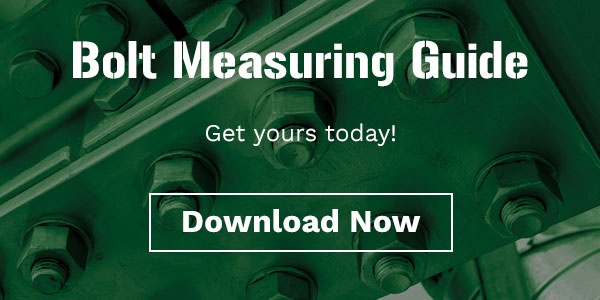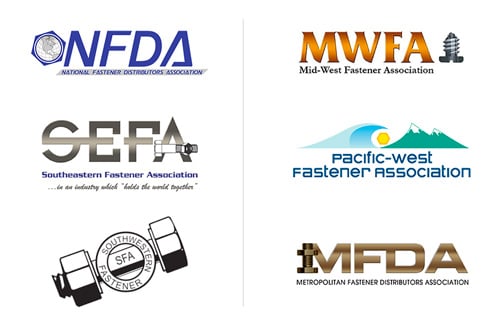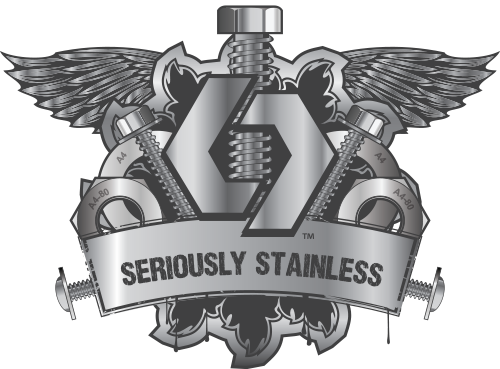![[Eurolink] Understanding Metric Fasteners](https://blog.eurolinkfss.com/hs-fs/hubfs/Blog%20Pics/%5BEurolink%5D%20Understanding%20Metric%20Fasteners.png?width=1200&height=630&name=%5BEurolink%5D%20Understanding%20Metric%20Fasteners.png)
When it comes to sourcing metric fasteners, clarity and precision are key, especially for U.S.-based engineers, buyers, and distributors more familiar with inch-based sizing. At Eurolink, we understand how frustrating it can be to navigate metric specifications, pitch conversions, and material options, especially when timelines are tight and the parts are hard to find.
That’s why we put together this updated and expanded guide to understanding metric fasteners, including how to read their sizing, compare to inch equivalents, convert thread pitch, and choose the right material for your application.
Metric Fasteners Names & Characteristics
For many Americans, the metric system is confusing and difficult to work with. But the great news is that metric fasteners follow a clear formula in their naming conventions.
Metric fasteners are named using the diameter, pitch, and length. Let’s take a look at an example of how to pull apart the name of a fastener to learn more about its characteristics.
Fastener name: M12-1.25 x 20
- The M indicates that the measurement for the fastener is metric.
- The 12 tells you the diameter in millimeters.
- 1.25 explains the distance between threads, also known as the pitch.
- 20 tells you how long the fastener is in millimeters.
To determine the coarseness of metric fasteners, you should know that as the number gets larger, the thread pitch becomes coarser. These different levels of coarseness can be used for different purposes.
For example, coarser fasteners are often used as car parts, while finer pitch fasteners are more common in plumbing fixtures.
Converting Metric Pitch to Threads Per Inch
People accustomed to working with inch fasteners might get confused when switching to metric. That’s because inch fasteners explain how many threads per inch a fastener has instead of the space between threads.
But you can easily convert the pitch of a metric fastener to understand its threads per inch. Here’s the formula you’ll follow.
- Convert the pitch from millimeters to inches by multiplying the pitch by 0.03937.
- Divide 1 by the number you got in step 1.
To make things simple for you, we’ve added a table below that converts metric pitch to threads per inch.
|
Table 1. Fastener thread pitch conversion from millimeters to inches to threads per inch. |
||
|
Pitch (mm) |
Pitch (inches) |
Threads per Inch |
|
0.2 |
0.0079 |
127.00 |
|
0.25 |
0.0098 |
101.60 |
|
0.3 |
0.0118 |
84.67 |
|
0.35 |
0.0138 |
72.57 |
|
0.4 |
0.0157 |
63.50 |
|
0.45 |
0.0177 |
56.44 |
|
0.5 |
0.0197 |
50.80 |
|
0.6 |
0.0236 |
42.33 |
|
0.7 |
0.0276 |
36.29 |
|
0.75 |
0.0295 |
33.87 |
|
0.8 |
0.0315 |
31.75 |
|
1.0 |
0.0394 |
25.40 |
|
1.25 |
0.0492 |
20.32 |
|
1.5 |
0.0591 |
16.93 |
|
1.75 |
0.0689 |
14.51 |
|
2.0 |
0.0787 |
12.70 |
|
2.5 |
0.0984 |
10.16 |
|
3.0 |
0.1181 |
8.47 |
|
3.5 |
0.1378 |
7.26 |
|
4.0 |
0.1575 |
6.35 |
|
4.5 |
0.1772 |
5.64 |
|
5.0 |
0.1969 |
5.08 |
|
5.5 |
0.2165 |
4.62 |
|
6.0 |
0.2362 |
4.23 |
Understanding this conversion is helpful when comparing inch and metric fasteners for compatibility or replacements.
What to Do if Pitch Isn’t Indicated
A widely accepted way of referring to a fastener’s pitch is by indicating it is coarse or fine. In some rare cases, you might also see extra fine threads.
Some fasteners don’t indicate a pitch size. So what do you do if there isn’t a clear indication? Fasteners that exclude pitch information are generally classified as coarse.
What you have to watch out for is that fasteners classified as coarse that use threads per inch are generally even more coarse than metric fasteners that are classified as coarse.
For example, M14-2.0 screw is considered coarse. Its threads are spaced 2.0 millimeters or 0.079 inches. On the American scale, the 9/16-12 screw is considered comparable and has a coarse classification as well. However, its threads are spaced 0.083 inches apart.
In this example, the American screw would have a coarser pitch than the metric one. There are some rare instances where the comparable American equivalent is finer than its metric counterpart, so you’ll want to pay attention and use the conversion information listed above.
Comparing the Length of Metric Vs. Inch Fasteners
One common ground for fasteners is how to measure the length. The only difference is that metric uses millimeters to indicate the length and American fasteners use inches. Here's how to measure various types of fasteners.
- Socket, low socket, cheese, hex, button and pan: measure the fastener’s length as everything under the head.
- Flatheads: measure the entire fastener from head to the end.
- Oval heads: measure from where the dome top and conical bearing meet down to the tip of the fastener.
At Eurolink, we often help customers identify the right length for their application, especially when swapping out imperial hardware for metric equivalents.
Common Metric Fastener Materials & Their Applications
Once you understand the naming conventions for metric fasteners, you’ll have another decision to make before purchasing. Fasteners can be made from a variety of materials, including:
- Steel
- Stainless steel
- Aluminum
- Brass
- Hot-dip galvanized
- Polyamide
- Silicon bronze
- And more…
Choosing the right material is just as important as choosing the right size. Here’s a quick breakdown of some of the most common materials Eurolink supplies, and where they’re used:
A4-80 Stainless Steel
- Strength Class: 80
- Corrosion Resistance: Excellent (marine-grade)
- Applications:
- Marine and offshore structures
- Food processing equipment
- Water treatment and chemical plants
- Architectural hardware in coastal areas
Why Eurolink?
Eurolink is the largest stockholder of A4-80 metric fasteners in North America, with rigorous testing and wide availability across sizes and standards.
Hot Dip Galvanized 8.8 Hex Head Cap Screws (Tapped-Undersized)
- Strength Class: 8.8
- Corrosion Resistance: High (zinc coating)
- Applications:
- Utility structures
- Agricultural equipment
- Outdoor assemblies and bridges
What makes ours unique?
Eurolink’s tapped-undersized (tZn) hex head screws are designed to maintain thread compatibility post-plating; ideal for engineers who’ve struggled with thread bind in heavily plated hardware. We are the only stocking distributor of this line in North America.
Metric Structural Bolts (Class 10.9, Galvanized and Plain Finish)
- Standards: DIN EN 14399-4
- Strength Class: 10.9
- Applications:
- Bridge connections
- Steel frame construction
- Heavy-duty industrial projects
- Available Sizes: M12 to M30, full HV sets
Eurolink Insight:
Structural fasteners require high availability and fast lead times. We stock the full range of HV sets (bolts, nuts, and washers) ready to ship.
Metric Torx Screws
- Drive Style: Star / Internal Torx
- Key Features: High torque transfer, tamper resistance, low cam-out
- Applications:
- Electronics & consumer products
- Automotive systems
- Industrial and robotic equipment
- Available Styles: ISO 14579 socket head, countersunk, button head, and more
Why it matters:
Precision assembly, reduced tool wear, and consistent torque values make Torx ideal for modern manufacturing lines and automation systems.
Eurolink’s Perspective: Why This All Matters
For many U.S. businesses, working with metric fasteners can be a challenge, especially when dealing with unique international specs, inconsistent suppliers, or tight deadlines. That’s why our mission at Eurolink is simple: take the guesswork out of sourcing metric fasteners.
Our team brings decades of experience in global sourcing, technical support, and inventory management to help customers:
- Identify the right spec for the job
- Source rare and hard-to-find parts
- Get fasteners to the U.S. quickly via air freight from Europe
- Reduce risk and delays with quality-tested, in-stock products
Your Partner for Metric Clarity and Confidence
Here’s a summary of what you need to remember about fasteners and their sizing classifications.
- Diameter: larger numbers indicate larger fasteners
- Pitch: larger numbers indicate a coarser thread (fewer threads per inch). If there is no pitch indicated, assume that it is coarse
- Length: larger numbers indicate a longer fastener
Whether you're building equipment for harsh marine environments or upgrading structural connections for industrial builds, Eurolink Fastener Supply Service is here to help.
- Need help identifying a fastener by size or material?
- Looking for the right substitute for an inch fastener in your BOM?
- Searching for hard-to-find ISO or DIN specs?
Eurolink Fastener Supply Service provides expertise to help you find the fasteners you need, even if they’re rare and hard-to-find.



![[Eurolink] New Product - Hex Head Cap Screws - Social Post 1](https://blog.eurolinkfss.com/hs-fs/hubfs/Social%20Media%20Posts/Products/%5BEurolink%5D%20New%20Product%20-%20Hex%20Head%20Cap%20Screws%20-%20Social%20Post%201.png?width=400&height=400&name=%5BEurolink%5D%20New%20Product%20-%20Hex%20Head%20Cap%20Screws%20-%20Social%20Post%201.png)




